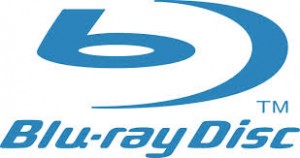Dear New Cyberian prospects and customers,
Our thread on http://www.newcyberian.com/blog/2013/08/14/blu-ray-for-independent-filmmakers/ is getting too busy and we saw the need to start a new thread about Blu-ray. We hope this thread will demystify some questions over Blu-ray and clear the confusion. We will try to put the questions raised by our callers and answer them based on our knowledge.
Question 1: I have a DVD now and I want to convert it to Blu-ray. Is it doable?
Answer: Yes, it’s doable. But I don’t recommend that. The reason is simple: You do not gain anything by converting a DVD to Blu-ray. For this argument, we have to understand the difference between Blu-ray and DVD. Tossing aside the nifty features Blu-ray offers the main difference is on the resolutions. While DVD is a 720 x 480 standard, Blu-ray is designed at a much higher standard of 1920 x 1080. If you imagine the TV screen has so many dots (or pixels) on it to form the pictures and movies, then Blu-ray has 6 times more dots than DVD. This is simple math: (1920 x 1080) ÷ (720 x 480) = 6. Because of this, Blu-ray gives much clear and sharper images on the screen. When you try to convert a DVD to a Blu-ray you will have to re-size the screen from 720 x 480 to 1920 x 1080. This is similar to re-sizing in Photoshop when you try to make a smaller picture bigger and the result will be blurred for sure because the additional dots are just approximations of the neighborhood dots. Since Blu-ray players can also play DVD discs, there is really no reason why you should convert a DVD to Blu-ray unless you have a lot of money and don’t want to keep it for yourself.
Question 2: Why should I do Blu-ray vs DVD?
Answer: There are a few compelling reasons. Almost all digital cameras or camcorders are high-definition now. If you take a high-definition video and downsize it to DVD you are wasting the information in the video. We have to accept the fact that screen sizes are becoming bigger and bigger. When the screen is big and the resolutions are low, the pictures on the screen will be grainy. With 6 times more pixels than DVD, Blu-ray definitely gives a much better picture quality and viewing experience.
Also, cheap Blu-ray players are selling at $29.95 level and they will definitely replace all the DVD players found in most households. True, streaming is also on the rise as a Blu-ray competition. But there are still a group of people who simply will not do streaming. Statistics have shown that most baby boomers are not streaming fans. They will prefer to have a physical disc on their hands. In terms of quality, streaming is yet to be as good as Blu-ray because of bandwidth caps imposed by most ISPs. So streaming is really targeting people who cannot hear the difference between mp3 and CD-quality sound. If your content is meant to be sharp with no video noise, Blu-ray is definitely the way to go.
Question 3: Is AACS copy protection safe?
Answer: Blu-ray copy protection is much stronger than DVD. Albeit, there are Blu-ray ripping software on the market and some of them are free. When it comes to copy protection, we have to know that there is always a race between hackers and copy protection designers. No matter how strong an encryption scheme is, it is just a matter of time that hackers will be able to break it. AACS, the copy protection used by Blu-ray, is no exception. We just have to accept the fact that most people will not try to crack the protection if the cost of doing it is too high. There will be of course very small number of people who get the satisfaction of cracking it and sharing the video with their friends. You just need to do a damage assessment on your part. If this happens on a small scale you might just have to accept it and consider that as part of the cost of doing business. It’s just a game of numbers.
Question 4: My replicated Blu-ray disc does not work on some Blu-ray players, what should I recommend to the customers?
Answer: Just like the good old DVD scenario that not all Blu-ray players are made the same, some Blu-ray player firmware is but bug-free. Blu-ray player manufacturers usually have a website for upgrading the firmware. You can suggest your customers read the user’s guide for the Blu-ray player on how to do a firmware upgrade, or you can get the brand and model of the player and Google it. I have to agree that requiring the end-users to do firmware upgrades is too much of a burden on them as most of them are not tech-savvy. Unfortunately, the Blu-ray standard is still not quite stable and this problem does arise once in a while.
Since this FAQ is an ongoing one so if I come across other questions I will continue to post them here. If you have questions please feel free to leave a comment here as well.

